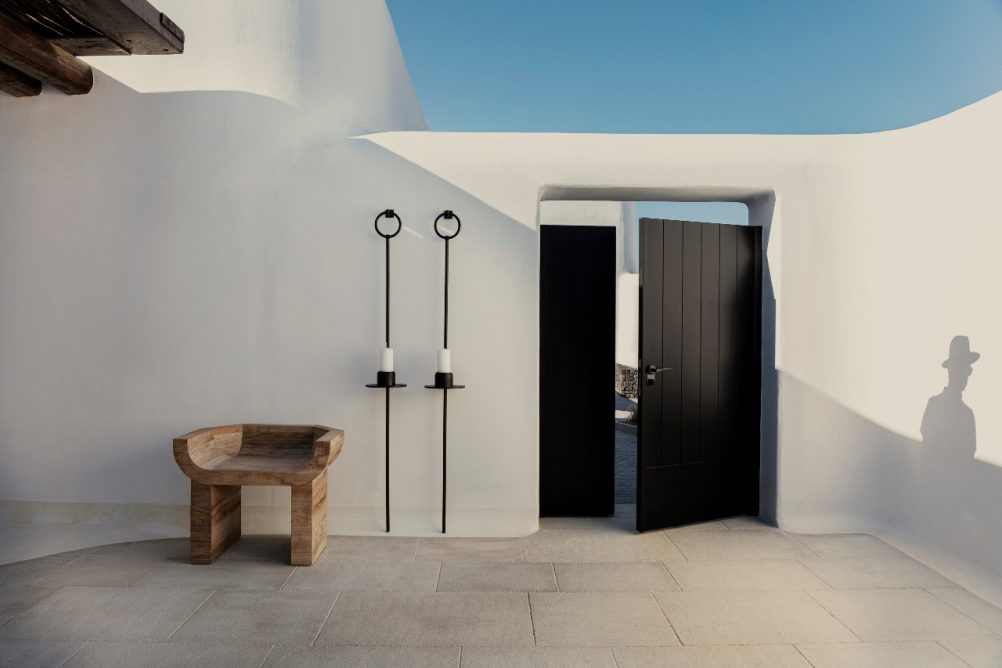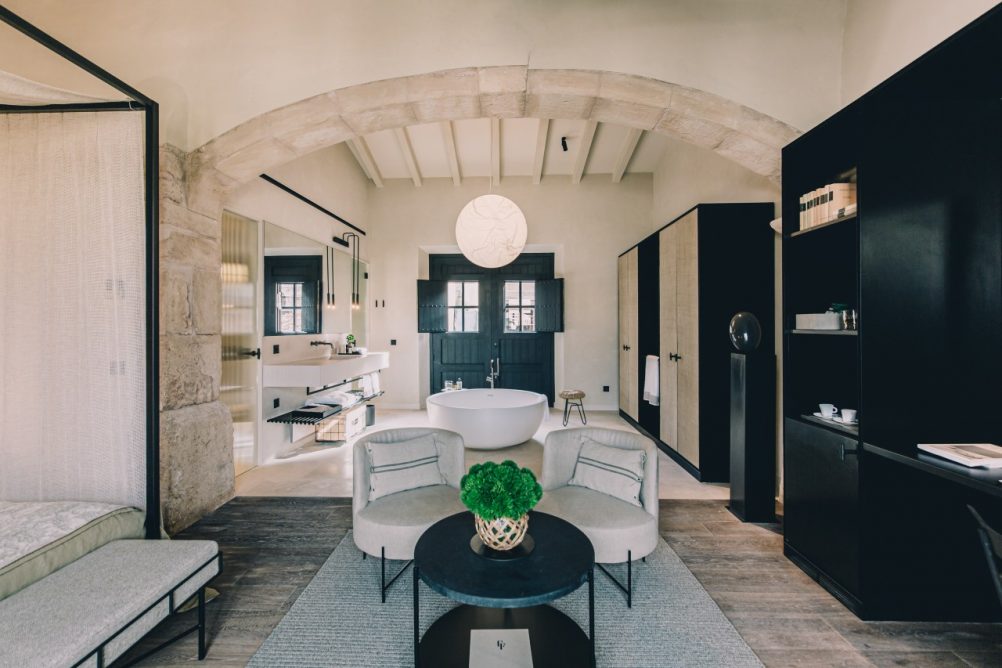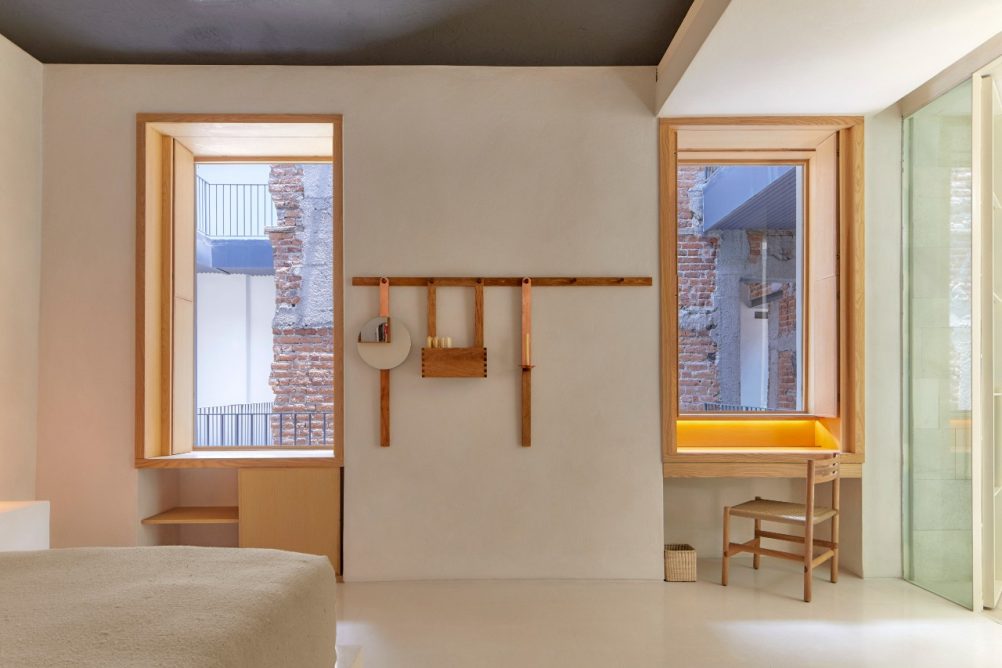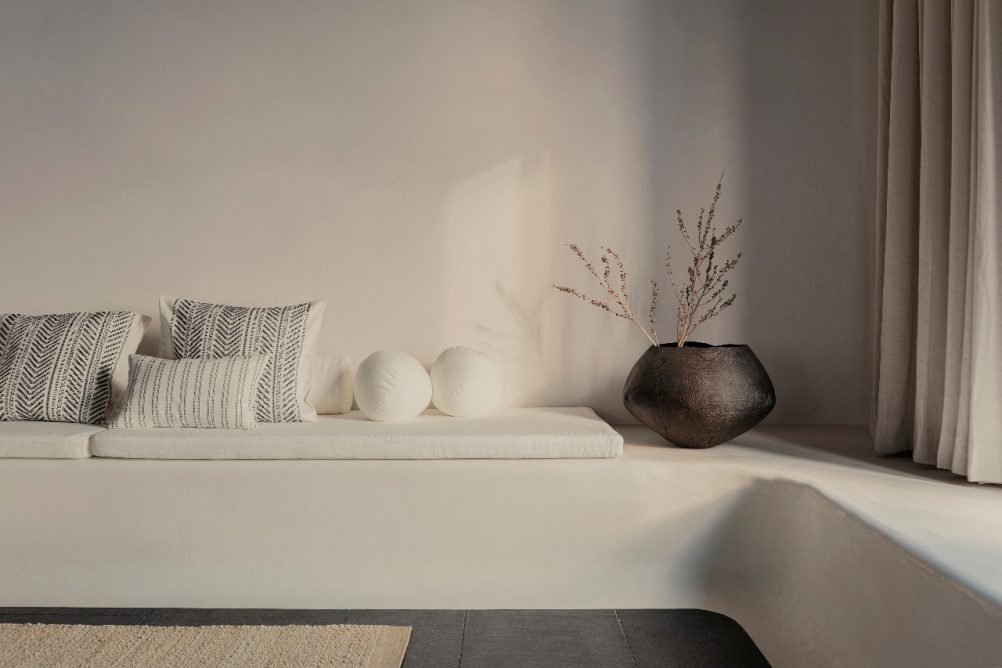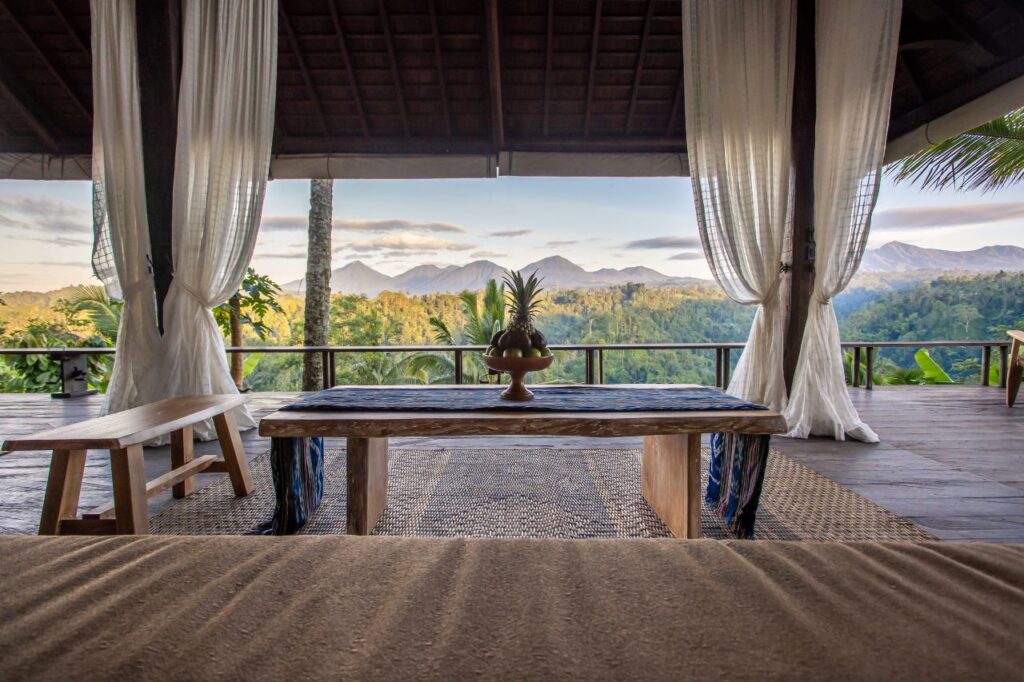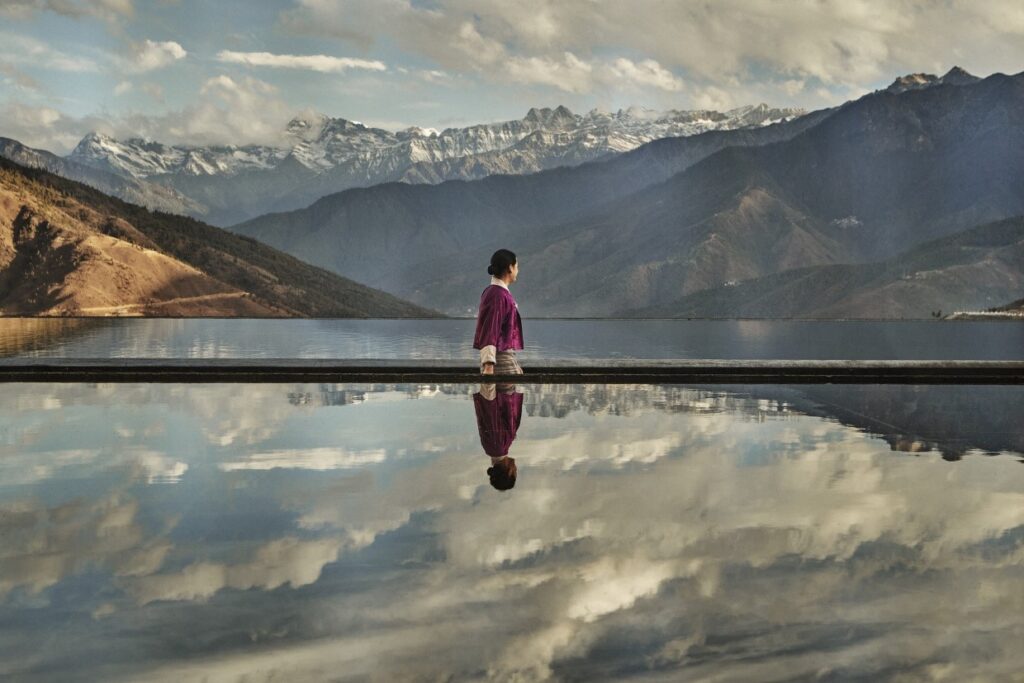Hotel design takes a turn towards tranquillity
These luxury retreat interiors offer post-COVID travellers a soft landing.
Words by Ute Junker
Photos supplied
Originally published in the Australian Financial Review
India’s palace hotels are not known for their restraint. With their cascading drapery and glittering chandeliers, mirrored mosaics and furniture upholstered in dazzling shades of peacock blue and hot pink, these former royal retreats have a penchant for dialling the opulence up to eleven.
At Fort Barwara, they do things differently. Located southeast of Jaipur, this 700-year-old fort – which is being transformed into an intimate retreat by the Six Senses hotel group – is set to open later this year. Guests who come here to enjoy spa sessions or some tiger spotting in the nearby Ranthambore National Park will find a very different take on palace chic. Here, desert tones and textures and furniture with classic lines allows the beauty of the original architecture to shine through.
“We wanted to enhance the heritage,” says Chinyu Samant, Six Senses’ Regional Director of Asia/Pacific – Architecture and Design. In what is only the company’s second heritage property – the first being a restored manor in Portugal’s Douro Valley – the design is firmly oriented towards less rather than more. “We stripped back to simplicity in texture and tone and let the aged details peek through, hinting to the opulence of the past and encouraging the imagination.”
Soft shades of sand and stone, buff and bisque – only occasionally enlivened by splashes of colour – encourage the eye to linger on the carefully-restored details: intricate plasterwork that sits beneath high domes, rippling Mughal arches and delicate fretwork that create atmosphere of sumptuousness without disturbing the sense of calm.
Fort Barwara is not the only new property to opt for neutrality. When international borders are finally open, travellers will discover that from Mykonos to Mexico and Mallorca, hotel design has taken a global turn towards tranquillity. Soothing shades and an emphasis on local materials are the common thread uniting a clutch of inviting new hotels that perfectly fit the post-COVID traveller’s need for calm and comfort, for retreats that feel reassuring as well as luxurious.
It is a long way from the Instagram-friendly interiors that have dominated hotel design in recentyears, where each eye-catching feature competed for attention with its neighbours. These softly-shaded, heavily-organic interiors – all of which were conceived well before COVID hit – offer exactly what we’re looking for in these fraught, frazzled times. These are interiors designed to let you exhale, to generate a sense of relaxation and an aesthetic that feels unforced rather than polished.
“It’s about celebrating the vernacular, the handmade,” says architect Will Meyer of Meyer Davis. Or, as hotelier Carlos Couturier puts it, “I wanted to do a hotel that felt very honest.”
In the last two decades Couturier and Grupo Habita, the hotel company he founded with Moisés Micha, have launched a dozen hotels across North America that have become favourites among design lovers. Their latest project, Circulo Mexicano – located in a heritage building in the heart of Mexico City, next to the cathedral and the grand square known as the Zocalo – takes their pared-back approach to new levels.
There are no plush carpets at Circulo Mexicano, no couches to sink into, no daybeds to lounge on. Instead, the all-white interiors and hand-crafted wooden furniture, courtesy of design studio La Metropolitana, create a mood that is simple rather than sumptuous.
“It was about going back to your roots, finding inspiration in things that are basic, very organic and sustainable,” Couturier says of the design inspiration. “It was a time when there was a lot of fake news, fake this, fake that. Our key principle was honesty.”
That extended to the sourcing of the fabrics and furnishings. The hotel’s name, Circulo Mexicano, sums up its design philosophy, the idea of a circular process where everything begins and ends in the same place.
“The thing I am most proud of is that almost everything in the hotel – from blankets to uniforms to slippers to furniture – came from Mexico City or within 50 miles of it,” Couturier says. “There was so much talent in my own city that I could grab so easily, not only the creatives but the people who could translate that into actual product. We engaged and embraced our own culture, and we are inviting foreigners to discover that culture throughout hotel.”
It’s not just guests that feel engaged by the process. When I ask the PR for details on the bedspread I spot in one of the promotional images – a handmade woollen number that looks so nubbly, my hand itches to run over it – she forwards, along with the details, a sweet note from the manufacturers, a small family business called La Gualipita, thanking me for my interest.
This penchant for the plebian, for properties that speak of the place and the people that made them, is very much of the moment. On Greece’s most glamorous island, Mykonos, businessman-turned-hotelier Aby Saltiel has a simple vision for his new luxury hotel, Kalesma.
“I want to bring back traditional Greek hospitality,” he says. The hotel has been conceived of as a village, and the hotel reception will feature an oven where fresh bread is baked right throughout the day, welcoming guests with its homey aroma.
As part of that approach, “we have used local materials and local people as much as possible,” Saltiel says. The traditional organic forms of the Cyclades are seen not only in the structure of the villas but also inside them, in the shape of the doorways and the fireplaces. “We’ve used traditional plastering rather than painting the walls – we’ve used all-natural materials, just like the old days.”
The minimalist interiors allow travellers to fully absorb the beauty of Mykonos’ seascapes. That desire to take a backseat to the surroundings also inspired architect Will Meyer of Meyer Davis in his work on Etereo, the new Auberge Collection resort on Mexico’s Riviera Maya.
“The number-one rule when working in such a beautiful location is that the star of the show is nature,” says Meyer. “There’s enough colour out there – the greens of the landscape, the blues of the sky and the ocean – to hold your attention. The last thing we want is to detract from that.”
Meyer worked with the developer to source many of the furnishings locally. “It’s about honouring the area in which we’re blessed to work,” he says. “Cloth, ceramic, stoneworks, woodworks – we custom-made a huge percentage of that locally, and there’s something that looks right about it. It has an innate simplicity, it has regional relevance. It’s honest about where it comes from, and there is a beauty in that.
“You could be cynical and call it a trend, or you could be more optimistic and call it a realization in world of hospitality that it’s not only better for planet, but it’s also more attractive to visitors. You don’t travel somewhere exotic and unique to look at the same furniture and light fixtures you can find elsewhere,” Meyer says.
The left turn towards neutral, organic interiors may be philosophically driven, but designers are also relishing the challenge of finding ways colour-free ways to enliven interiors.
“When you have a monochrome palette and you’re working with basic materials, you have to play with different textures to get that sense of movement,” says Carla Navas of Spanish design house WIT.
Navas did precisely that with her work for Can Ferrereta, a luxury retreat set to open shortly on the less-visited side of the island of Mallorca. The design juxtaposes light fabrics and dark furnishings, with textural highlights including walls roughly coated with mortar and bedheads woven from hemp rope by local artisans.
Other designers harness the power of geometry. At Kalesma, Vangelis Bonios of Studio Bonarchi gives definition to the interiors through the organic strokes of the reed-and-bamboo combination that lines the ceiling, the horizontal lines of the black bamboo bedheads and even the gentle but distinct vertical folds in the drapes that frame the window.
